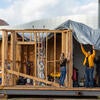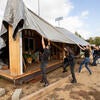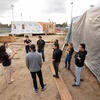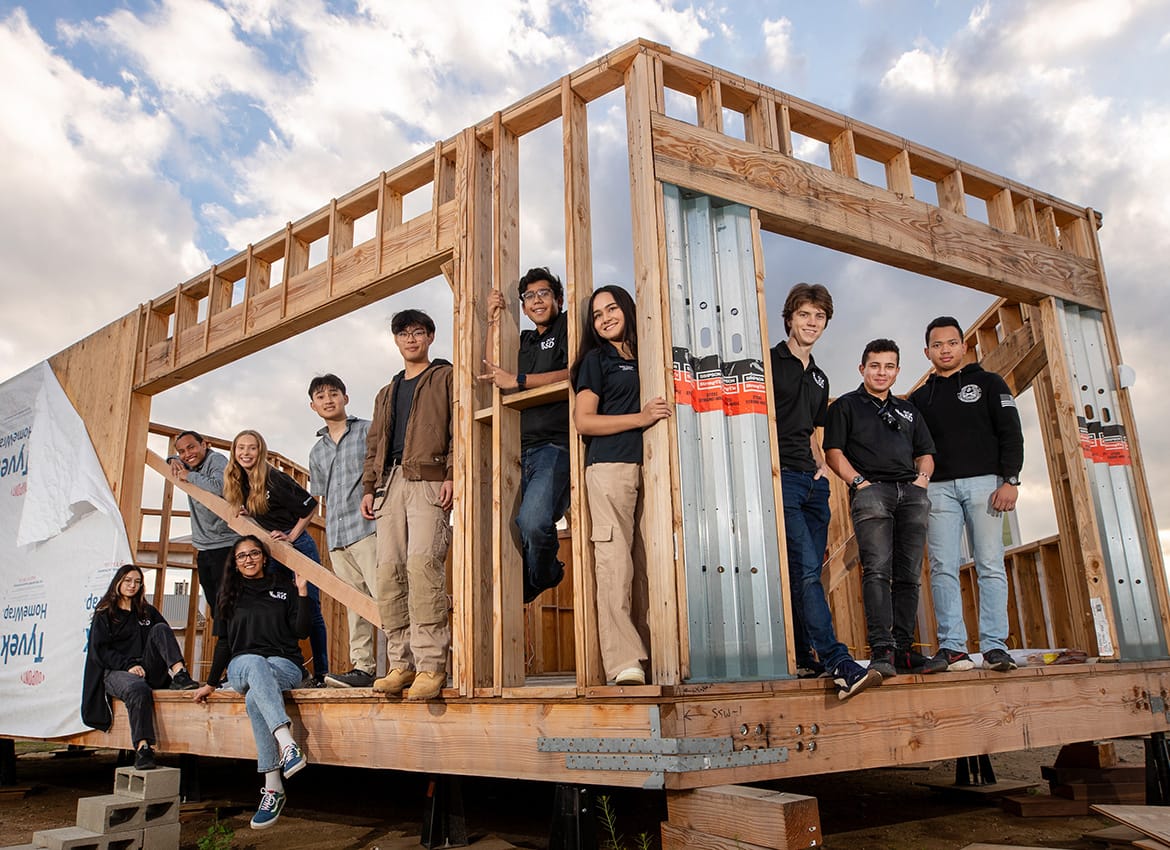
Green House
This student-built eco-house is so efficient inhabitants would never have to pay an electricity bill
By David Danelski
W hat began as an idea and a grant application a little over a year and a half ago is now an eco-friendly house that uses solar electricity so wisely it doesn’t need to be connected to the grid. The futuristic dwelling is the product of a group of UCR mechanical engineering undergrads who, with no prior architectural or construction experience, managed to obtain funding and build from the ground up an affordable, energy-efficient showcase home designed for sustainability.
The 1,154-square-foot house, built on campus over the last year, is unlike any other. The floor plan is a hexagon, with three long walls connected by three short walls, making its exterior void of any square corners. Remarkably, the unusual shape — like a triangle clipped of its points — allows for multiple efficiencies for economic and sustainable living.
First, the shape eliminates the need for space-consuming hallways. The trick was putting the dining room in the center, with direct access to the kitchen, living room, and two bedrooms, explained engineering student Cooper Proulx, the project’s leader. The shape also allows the house to be oriented in ways that prevent its exterior walls from ever directly facing the sun, keeping the structure cooler and resulting in less electricity use.
Similarly, the shape permits windows to be in locations without direct sun while still letting in enough natural light to avoid the use of light bulbs during the day. The house also has 6-inch-thick exterior walls for better insulation. Meanwhile, solar panels generate electricity during the day that is stored in a wall-mounted battery. And it’s modular, meaning the house can be taken apart in sections and loaded on a truck for relocation with minimal fuss.
Its efficiency also makes it more affordable: the design calls for less lumber and other materials than rectangle structures; its inhabitants will never pay an electricity bill; and the home can be erected on inexpensive land off the grid.
“One of the biggest issues here in Southern California is the cost of housing,” Proulx said. “It was our job to build a home that’s not only good for the environment, but also affordable, so people can buy it.”
The group’s faculty advisor, Sundararajan Venkatadriagaram, was impressed.
“This was a truly student-led project,” said Venkatadriagaram, a UCR associate professor of teaching in the mechanical engineering department. “The students planned and executed every aspect of the project. The house is roomy and has an open feel. It deviates considerably from the rectangular grid layout and has a more interesting visual appeal while also being functionally satisfactory and environmentally sustainable.”
The project started humbly enough. Venkatadriagaram shared with his “Introduction to Mechanical Engineering” class a state grant opportunity to win $100,000 for building materials and compete with 19 other colleges and universities to design and build an energy-efficient home. The students wrote the grant with his guidance and reviews, and Venkatadriagaram helped secure “letters of support” — essentially third-party endorsements — to be included in the application.
The team started with about 10 students from Venkatadriagaram’s engineering class but recruited more students from across disciplines, peaking at around 45 members. They produced many designs using engineering software before settling on the hexagon shape with a centrally located dining room. Once the design was approved by a Riverside structural engineering firm, the students then had to learn how to, well, build a house.
“When we first started, no one knew how to use a hammer,” Proulx said. “We read a couple of books and watched videos and spent months and months figuring it out.”
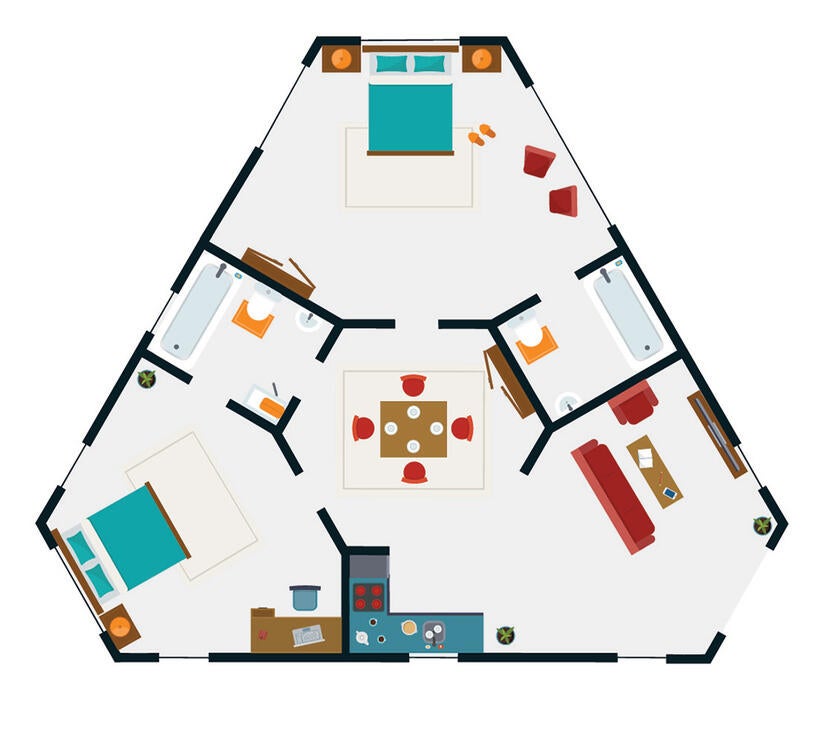
Most of the construction occurred last summer and students often found themselves working in triple-digit heat.
“We’re at the construction site and every day we need things, like blades for the chop saw,” Proulx said. “So, we ended up running down to Lowe’s and Home Depot and buying things.”
But it all came together. A section of the house was exhibited in October with other student home designs at the Orange County Sustainability Decathlon held in Costa Mesa. The house currently sits on a vacant lot near UCR’s Student Recreation Center with its roof off so it can be moved to a permanent locale that is yet to be determined. The Riverside-based company Solar Max will be providing solar panels in the future.
“It would be great to place this in a prominent location on campus as a testimony to the kind of multidisciplinary, student-led, hands-on learning that occurs at UCR,” Venkatadriagaram said.
Following the home design show in Orange County, the students were invited in November to design and display a second home at an international design competition in St. Louis in 2025 called the Gateway Decathlon. The invite comes with a $100,000 grant, though the students expect to raise additional funds to complete the project.
“We are excited to be starting a new construction project,” Proulx said. “The team and I have learned so much from the first project and we believe that we will be able to build even more sustainably and affordably throughout this next project.”
